When it comes to home maintenance, few problems can escalate as quickly — or as quietly — as a water leak. While a dripping pipe or a damp wall may not seem like a major concern, even a small leak can lead to one of the most dangerous household issues: water leak mold growth.
We’ve seen firsthand how fast mold can spread after a water incident and the severe damage it can cause to both your property and your health. Whether it’s a burst pipe behind the wall, a slow ceiling leak, or an unnoticed plumbing issue under the floor, the longer moisture remains trapped, the higher the risk of leak and mold for after water damage restoration.
In this blog, we’ll break down exactly how long it takes for mold to grow after a leak, what signs to watch for, and how you can protect your home. If you suspect a hidden leak, it’s critical to act fast — and our expert water leak detection Las Vegas team can help.
📞 Call us today at (702) 745-5571 for fast, reliable leak inspection and mold prevention services.
Table of Contents
- Understanding the Link Between Water Leaks and Mold Growth
- How Long Does It Take for Mold to Grow After a Leak?
- Factors That Affect How Fast Mold Grows After Leak
- Common Areas Where Mold Appears After a Leak
- Early Signs of Mold from Leak You Should Never Ignore
- Health Risks Associated with Mold After Water Leak
- How to Stop Water Leak Mold Growth Before It Starts
- Professional Mold and Leak Damage Restoration Process
- DIY vs Professional Mold Cleanup: What’s the Right Choice?
- How Mold Affects Your Home’s Value and Structural Integrity
- How to Prevent Future Leaks and Mold Issues
- FAQs
Understanding the Link Between Water Leaks and Mold Growth
Mold thrives on three things: moisture, warmth, and organic material — all of which can be found inside your home after a water leak. Whether it’s drywall, carpeting, insulation, or even wooden framing, any damp area can become a breeding ground for mold spores.
When a plumbing line bursts or a pipe starts leaking, moisture seeps into hidden spaces. Without immediate drying or proper ventilation, mold can begin to develop — often within 24 to 48 hours. This process, known as water leak mold growth, can go unnoticed for days or even weeks, causing damage beneath the surface before visible signs appear.
The connection between water causing mold is simple: no moisture means no mold. That’s why detecting and fixing leaks promptly is the key to preventing long-term water damage strategies for mold.
How Long Does It Take for Mold to Grow After a Leak?
The short answer: as little as 24 hours.
In ideal conditions — such as high humidity, warm temperatures, and stagnant air — mold after water leak can begin forming within just one day, and colonies can fully develop within three to five days.
Here’s a quick timeline of what typically happens after a water leak:
| Time Since Leak | What Happens |
| 0–24 Hours | Moisture seeps into walls, floors, and furniture. |
| 24–48 Hours | Mold spores start to germinate and attach to wet surfaces. |
| 3–5 Days | Visible mold growth may appear; musty odors begin. |
| 1–2 Weeks | Mold colonies spread deeper, damaging materials. |
| 2+ Weeks | Structural decay and major leak and mold damage occur. |
Even minor leaks — like a dripping faucet under the sink — can lead to water leak mold growth if left unaddressed. The key is time. The longer moisture lingers, the greater the chance that mold will take hold and multiply.
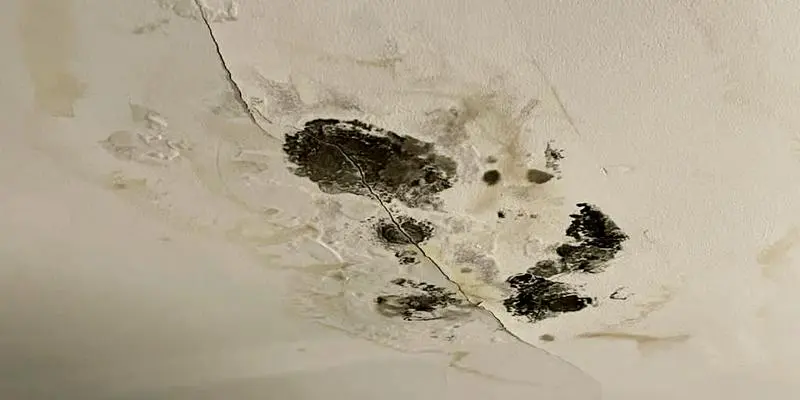
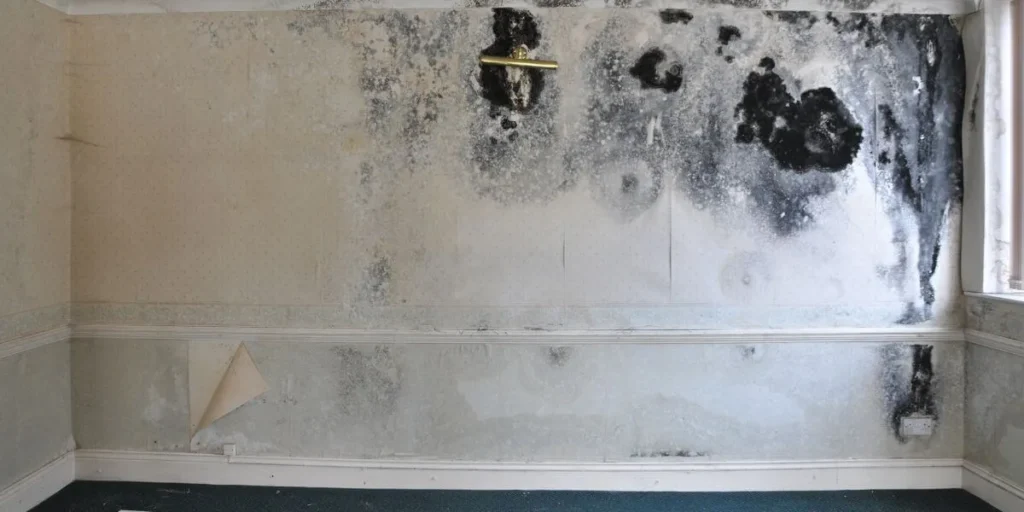
Factors That Affect How Fast Mold Grows After Leak
Not all leaks cause mold at the same rate but we have to understand how fast mold grows after leak. Several factors influence how quickly water leaks cause mold in your home:
🌡️ 1. Temperature
Mold thrives in warm, damp environments (typically between 77°F and 86°F). Las Vegas homes often maintain these indoor temperatures, making quick response crucial.
💧 2. Humidity
If your home’s humidity level is above 60%, it creates the perfect environment for mold spores to spread rapidly.
🪵 3. Porous Materials
Surfaces like drywall, carpet, insulation, and wood absorb water quickly and retain it longer — leading to faster mold after water leak.
🏚️ 4. Airflow and Ventilation
Poor ventilation allows moist air to remain trapped, encouraging water leak mold growth behind walls or under floors.
⏳ 5. Duration of the Leak
A sudden burst pipe might dry out quickly if caught early, but a slow leak over weeks creates long-term dampness, ideal for hidden mold growth.
Understanding these conditions helps explain why early detection are essential for preventing mold before it becomes a costly problem.
Common Areas Where Mold Appears After a Leak
Mold doesn’t always appear where you expect it. Some of the most common areas affected by water leak mold growth include:
- Behind walls and ceilings — often from leaky pipes or roof leaks.
- Under sinks — from faulty plumbing connections or slow drips.
- Around bathtubs and showers — due to cracks in grout or caulking.
- Under flooring or carpets — where water seeps unnoticed after flooding or pipe bursts.
- Basements and crawl spaces — from groundwater or foundation leaks.
If you suspect a leak but don’t see visible damage, it’s important to schedule an inspection immediately. Our professionals use non-invasive tools to locate hidden leaks before mold has the chance to grow.
Early Signs of Mold from Leak You Should Never Ignore
Catching mold early can save thousands of dollars in repairs. Here are some signs of mold from leak that every homeowner should look for:
- Musty Odors: A damp, earthy smell is often the first warning sign of hidden water leak mold growth.
- Discoloration: Yellow, green, or black patches on walls, ceilings, or baseboards.
- Peeling Paint or Bubbling Wallpaper: Indicates moisture trapped behind surfaces.
- Allergy Symptoms: Sneezing, coughing, and itchy eyes that worsen indoors.
- Warped Wood or Soft Drywall: Sign of prolonged water exposure and potential mold underneath.
If you notice any of these symptoms, don’t wait — call (702) 745-5571 for an immediate inspection by us. Our specialists can confirm whether your leak has caused mold growth and provide targeted solutions.

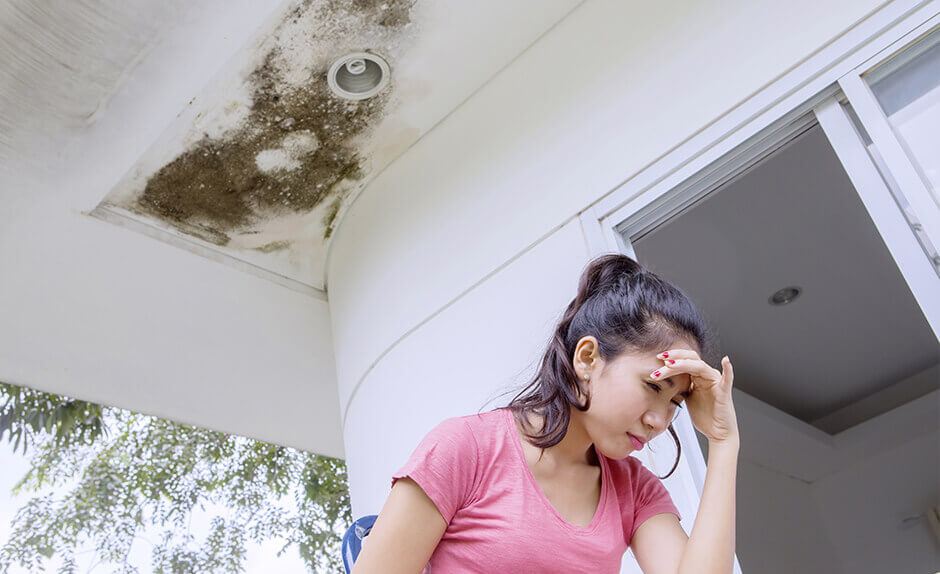
Health Risks Associated with Mold After Water Leak
While leak and mold damage can ruin your home structurally, the health impact is just as concerning. Mold spores can cause a range of issues, especially for those with respiratory conditions, allergies, or weakened immune systems.
Common health problems caused by mold after water leak include:
- Persistent coughing or wheezing
- Nasal congestion and throat irritation
- Skin rashes and allergic reactions
- Headaches and fatigue
- Aggravation of asthma or chronic sinus infections
Black mold (Stachybotrys chartarum), in particular, can release toxic spores that pose serious health risks if exposure continues. Acting quickly to eliminate leaks and mold growth is critical to maintaining a safe, healthy home environment.
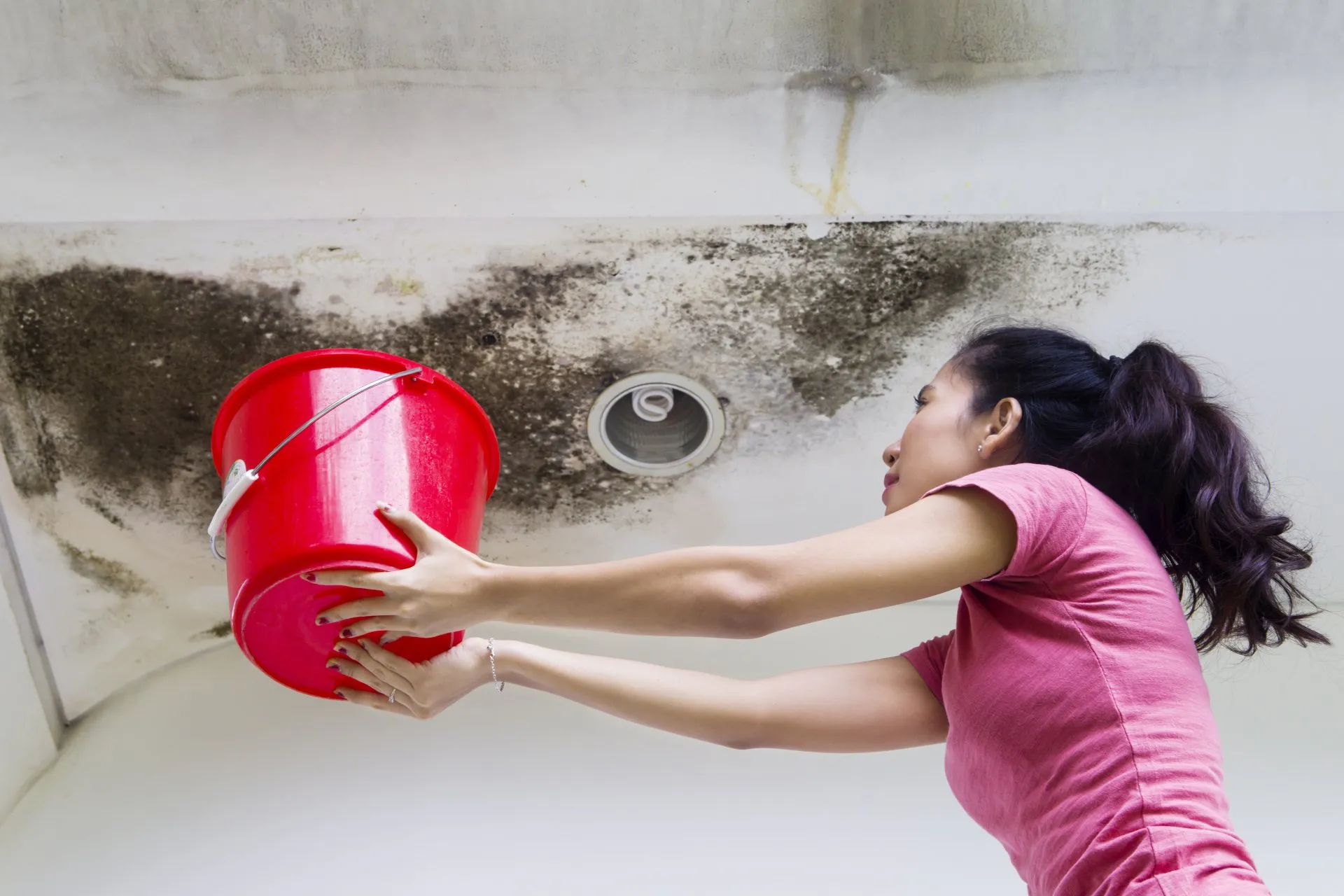
How to Stop Water Leak Mold Growth Before It Starts
Prevention is always cheaper than repair. Here are proactive steps homeowners can take to minimize water leak mold growth:
✅ Inspect Plumbing Regularly: Check under sinks, around toilets, and behind appliances for any dampness.
✅ Fix Leaks Immediately: Even small drips can lead to leak and mold damage over time.
✅ Use Dehumidifiers: Maintain indoor humidity below 50% to slow mold development.
✅ Ventilate Moist Areas: Ensure proper airflow in bathrooms, kitchens, and laundry rooms.
✅ Schedule Annual Leak Inspections: Professional water leak detection Las Vegas services can identify hidden leaks before they cause problems.
By combining preventive maintenance with regular professional inspections, you can drastically reduce the risk of mold after a water leak.
Professional Mold and Leak Damage Restoration Process
When you’re already dealing with leak and mold damage, DIY cleanup often isn’t enough. At our company, we follow a meticulous step-by-step process to restore your home safely:
- Leak Detection: Using advanced moisture meters and thermal imaging to locate hidden leaks.
- Water Extraction: Removing standing water and drying affected areas with industrial equipment.
- Mold Inspection: Identifying the extent of water leak mold growth using air and surface testing.
- Mold Removal: Safely cleaning and sanitizing contaminated areas.
- Restoration: Replacing damaged drywall, flooring, or insulation to restore your home’s integrity.
- Final Quality Check: Ensuring moisture levels are back to safe levels to prevent future growth.
With years of experience serving the Las Vegas community, our certified team ensures every step meets EPA and IICRC standards — giving you peace of mind that your home is truly mold-free.
DIY vs Professional Mold Cleanup: What’s the Right Choice?
When you discover mold after a leak, it’s natural to wonder whether you can handle the cleanup yourself or if you should call in professionals. The truth is, the right choice depends on the extent of the water leak mold growth.
If the affected area is less than 10 square feet and the mold hasn’t penetrated deep into walls or flooring, a homeowner can often manage light cleaning using protective gear and commercial disinfectants. However, even small patches can hide deeper leak and mold damage behind the surface. That’s where the problem begins.
Professional restoration teams, like those at our company, use advanced tools such as air scrubbers, moisture meters, and HEPA vacuums to detect and remove mold completely — not just what’s visible. They also ensure proper containment, preventing mold spores from spreading throughout your home during the cleanup.
In cases where mold was caused by hidden or ongoing water leaks, experts also identify and repair the leak source, preventing future growth. This dual approach of remediation ensures long-term safety and savings.
So while a DIY solution might seem cheaper, professional service provides something you can’t get with store-bought cleaners — peace of mind that your home is truly mold-free and safe for your family.
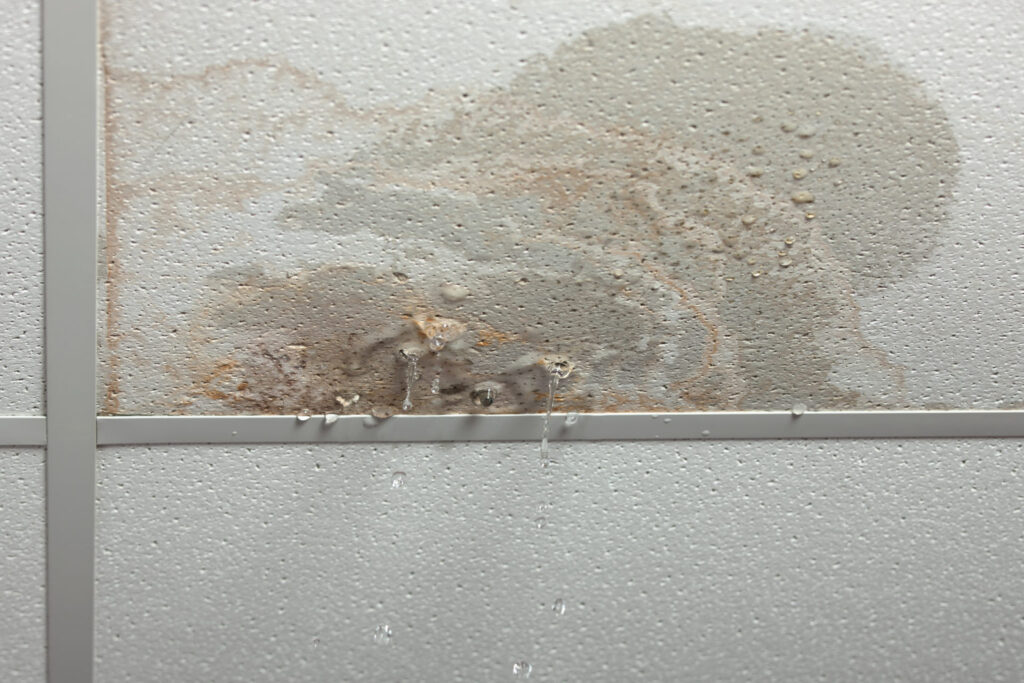
How Mold Affects Your Home’s Value and Structural Integrity
Most homeowners worry about the health risks of mold after a water leak, but few realize the serious impact it can have on property value and structure. Real estate experts often cite mold as one of the top deal breakers for potential buyers.
When water leaks cause mold, the affected materials — drywall, insulation, and even framing — begin to deteriorate. Over time, moisture weakens structural components, leading to sagging walls, warped floors, and compromised foundations. This kind of leak and mold damage can dramatically reduce your home’s integrity and resale value.
Buyers are often hesitant to invest in homes with a history of water leak mold growth, as remediation can be costly if not handled by professionals. Insurance claims may also become complicated if mold damage wasn’t addressed promptly after the leak occurred.
By scheduling regular plumbing inspections, homeowners can prevent mold before it begins — protecting both their investment and peace of mind.
At this company, we’ve helped countless clients restore their homes and maintain full value by tackling leaks early and preventing recurring mold issues. A dry home is not only safer — it’s worth more.
How to Prevent Future Leaks and Mold Issues
Once the current issue is resolved, preventing future problems is the next step. Here are long-term strategies to keep water leaks causing mold at bay:
- Upgrade old pipes: Consider replacing corroded or aging plumbing with PEX piping.
- Insulate exposed pipes: Prevent condensation and leaks caused by temperature fluctuations.
- Check appliances regularly: Water heaters, dishwashers, and washing machines are common leak sources.
- Maintain your HVAC system: Clean air ducts and replace filters to control indoor humidity.
- Seal cracks and gaps: Prevent moisture intrusion around windows, doors, and roofs.
These simple preventive measures can extend the life of your plumbing system and prevent future water leak mold growth.
FAQs – Mold Growth After Water Leaks
1. How quickly does mold grow after a water leak?
Mold can start growing within 24 to 48 hours after a leak, depending on humidity and temperature.
2. Can I clean mold myself?
Small areas (under 10 sq. ft.) can be cleaned with household disinfectants, but extensive leak and mold damage requires professional treatment to ensure safety.
3. What are the most common signs of mold from leak?
Musty odors, wall discoloration, peeling paint, and allergic symptoms are telltale signs of mold from leak.
4. Will fixing the leak stop mold growth?
Fixing the leak prevents further moisture buildup, but existing water leak mold growth must still be removed professionally.
5. How can I prevent mold in the future?
Schedule annual inspections and maintain proper ventilation to control humidity.
Protect Your Home with Us
Even a small water leak can have big consequences. Within just 24 hours, moisture can lead to water leak mold growth, damaging your walls, floors, and health. The key to preventing these issues is early detection and professional intervention.
We specialize in finding and fixing leaks before they turn into costly disasters. Our expert technicians provide non-invasive water leak detection Las Vegas services, mold inspection, and complete restoration solutions — ensuring your home stays safe, dry, and healthy.
📞 Call (702) 745-5571 today to schedule your inspection and speak with a certified technician.
Because when it comes to water leaks and mold, every hour counts — and with our company, you’ll always have the region’s most trusted plumbing experts on your side. Follow us on Instagram for regular updates!

